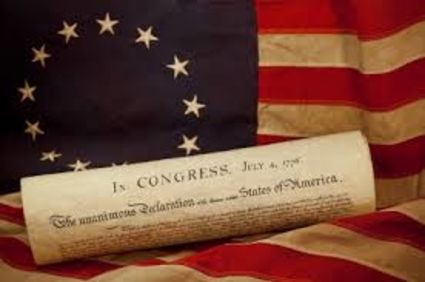July 2, or July 4?
Last updated 6/30/2015 at Noon

If celebrating the Fourth of July can be credited to any one person, it would have to be the second president of the United States, John Adams. Adams was a leading proponent of independence from Great Britain. He was convinced that the only way to escape the tyranny of the British was for the 13 colonies to unite and become a new country. A group of patriots gathered and began to work on a document stating their beliefs and outlining a new nation. Though Thomas Jefferson would be the author of the document, there would be input from delegates from all the colonies. After delays, the document was prepared and independence declared on July 2, 1776.
The Declaration of Independence was sent to the printer and ready to be signed on July 4, 1776. John Dunlap, the official printer for the Continental Congress, produced 200 broadsides, or single sheet copies. They were to be distributed to each of the 13 new states. Fifty six delegates had signed the declaration. They were traitors in the eyes of the British. There are 25 copies of Dunlap’s document are known to exist. One copy was sold on Ebay by Southeby’s Auction house to two private collectors for $8.14 million.
Adams was enthusiastic about the actions of the Continental Congress and the new document and wrote to his wife, Abigal, on July 3, 1776, that the occasion should be commemorated “with pomp and parades, with Shews, games, sports, guns, bonfires, and illumination from one end of the continent to the other from time forward forevermore.” The first commemorative fireworks were held on July 4, 1777.
The celebrations that Adams envisioned were coming about. The problem was that Adams did not like the choice of date. He thought that the celebration should be held on July 2, the day independence was declared and not on July 4, the date of the signing. He would decline to participate in events held on July 4.
For the first 15 to 20 years after independence, there was not much celebrating done. It seemed that after the first few years of independence the new country was more concerned in becoming a country than celebrating Independence Day. So much so that Adams in 1817 he stated that it seemed that America was “uninterested in its past.”
The formation of new political parties in the 1820s and 1830s, and possibly the deaths of Thomas Jefferson and John Adams, both occurring on July 4, 1826, possibly stirred interest in celebrations on July 4.
IN 1820, John Quincy Adams commissioned Washington D.C. printer William Stone, to engrave a facsimile copy of the Declaration Of Independence. Stone used a process to engrave a printing plate that took three years. He also included copies of the signatures of all 56 signers. The plate was sold to the State Department.
Congress ordered 200 copies of the 18 X 24 inch document to be distributed to government repositories, significant office holders, and the three surviving signers, Thomas Jefferson, John Adams, and Charles Carroll. Carroll died in 1832. He had been a delegate to the Constitutional Convention, but had arrived too late to vote on independence. He was present in time to sign the document.
Two copies were given to Marquis d’ Lafayette when he visited America in 1824.
In 1849 the Anastatic Copy Method was developed in Germany. It later used in England also. It was a method that was intended to reproduce a copy, but could destroy or weaken the original in the process. It was used on the original copy in possession of the National Archives and over the years the print of that document has lightened alarmingly.
In 1870 Congress declared July 4 a national holiday. Early celebrations were more like political rallies with stump speakers giving often lengthy speeches on topics of the day. There were fireworks and a few other events that Adams had envisioned.
In the 20th Century things began to change. After the two world wars, America was ready to celebrate and town picnics gained in popularity, fireworks displays began to get larger and more complicated and ornate. Fireworks would become a multi- million dollar business and events like Nathan’s Hot Dog Eating Contest would become traditional and highly anticipated happenings each year. Nathan’s contest started in 1972 and grows larger each year.
This year the Orange Convention and Visitors Bureau will once again sponsor a night of events at Riverfront Pavillion. Lasting from 6:00 p.m. until 10:00 p.m. will be a series of family oriented events. There will be food, face painting, bounce houses, music, and fireworks. The Ruxpins will take the pavilion stage at 7:00 p.m. with the fireworks display to follow at 9:00 p.m.






Reader Comments(0)